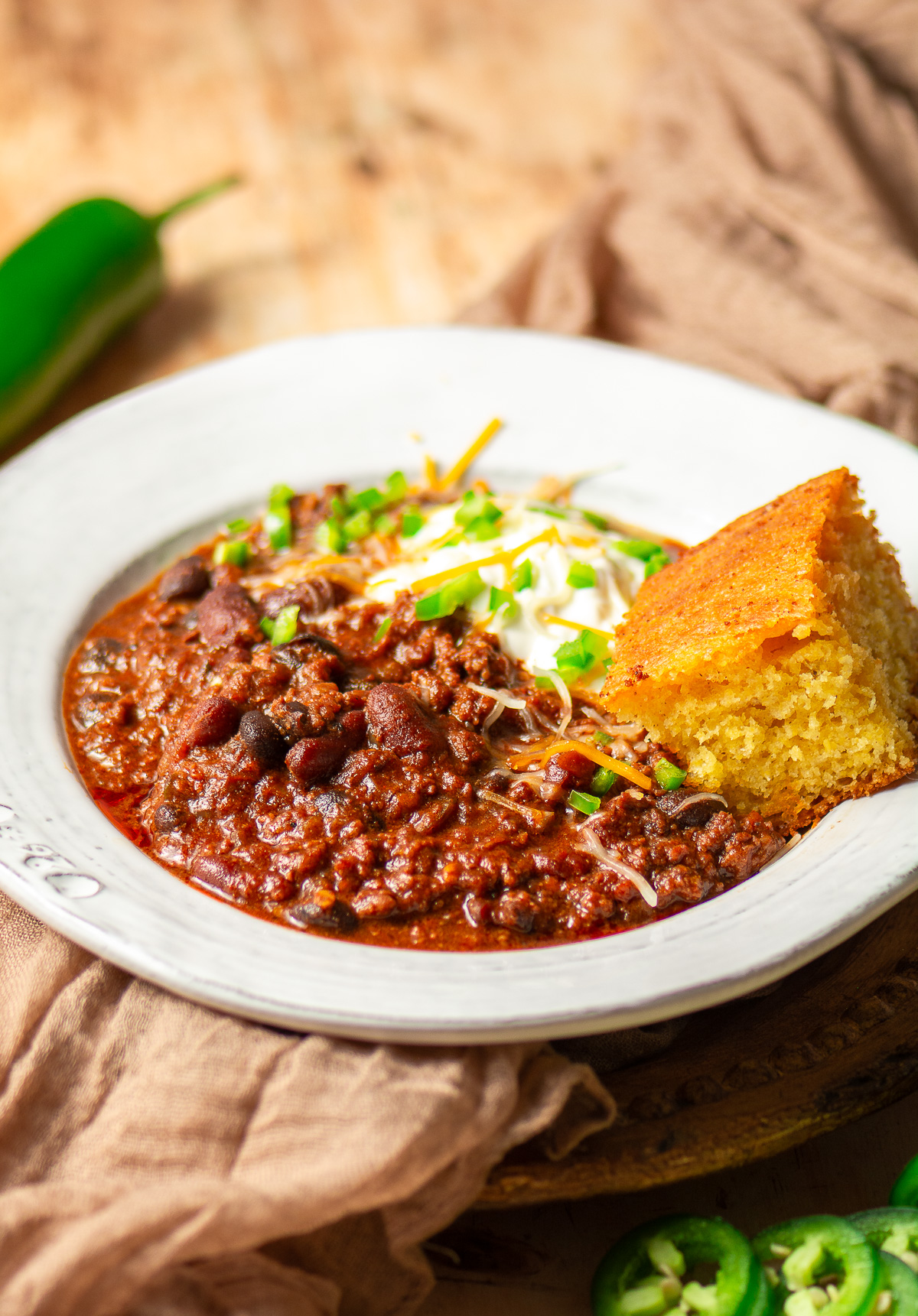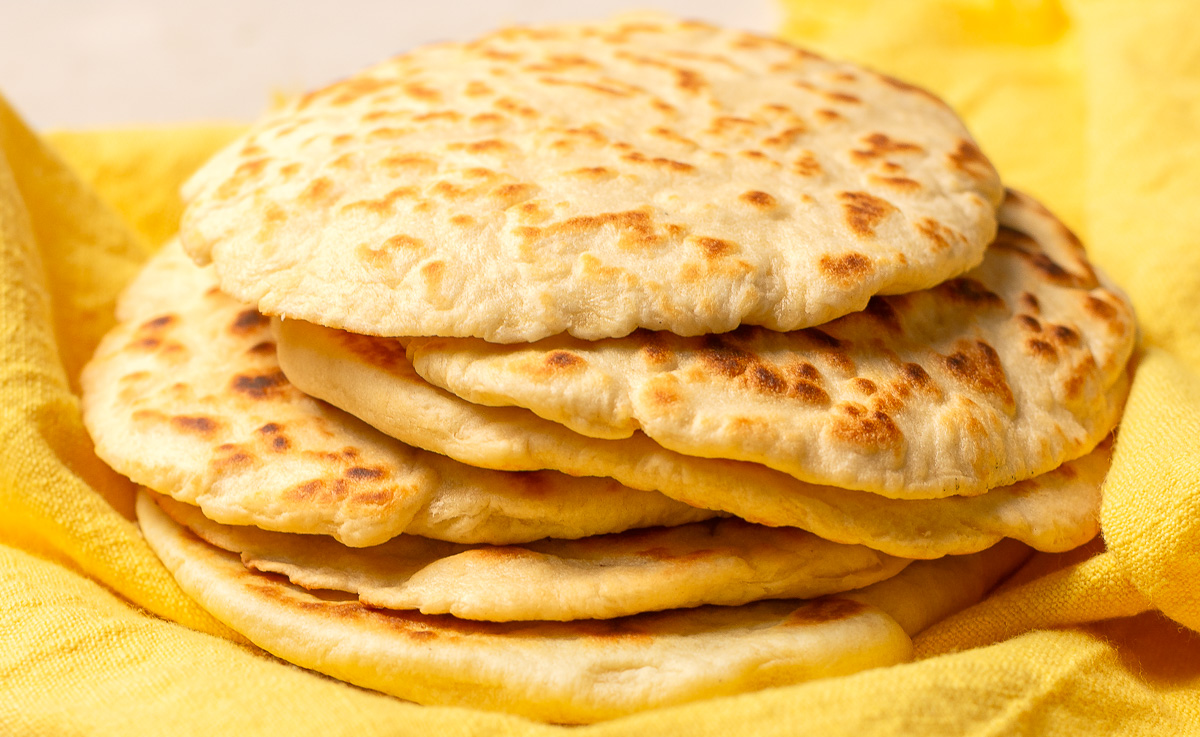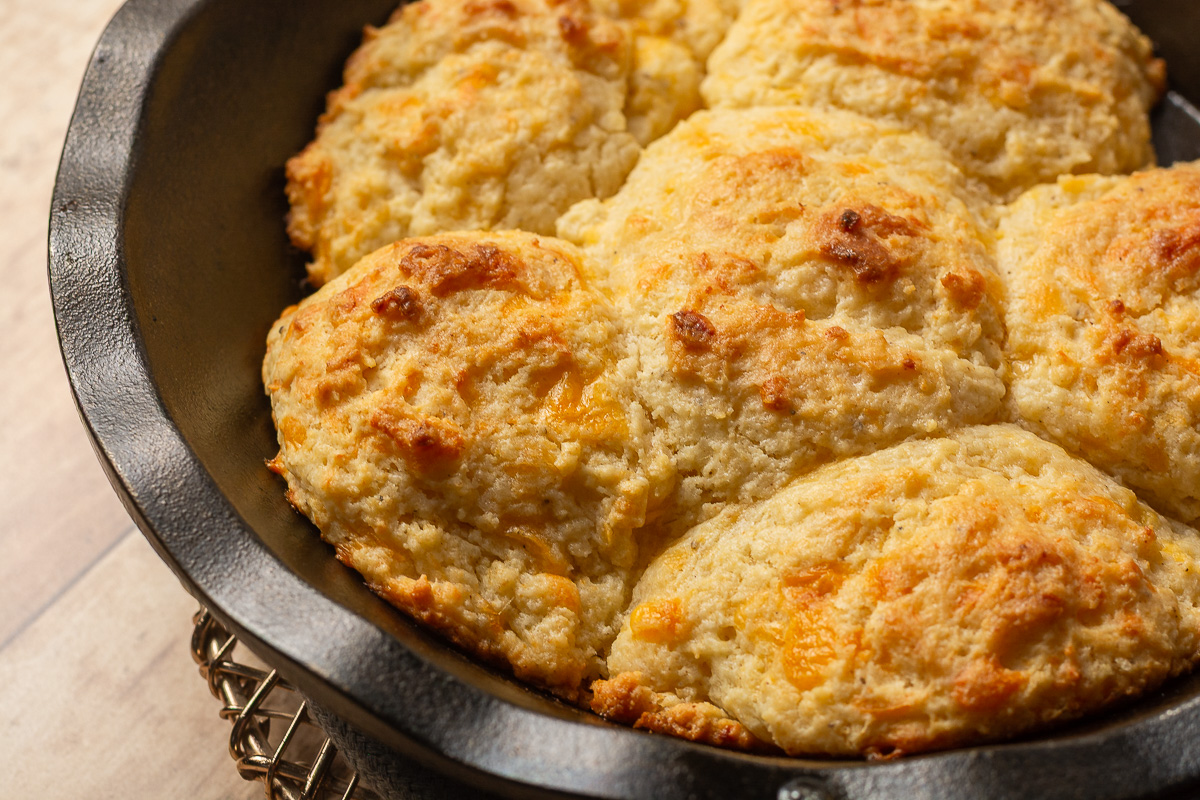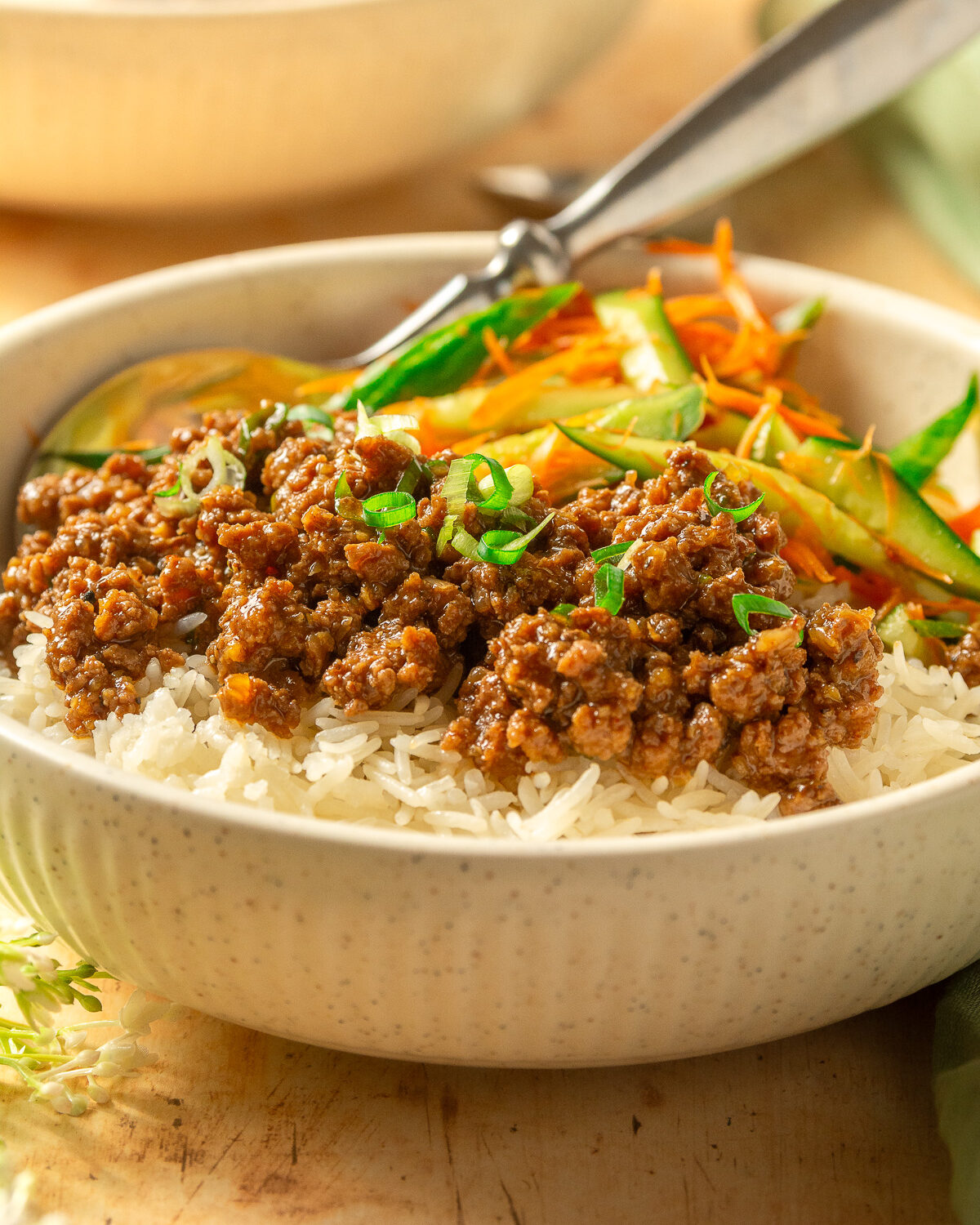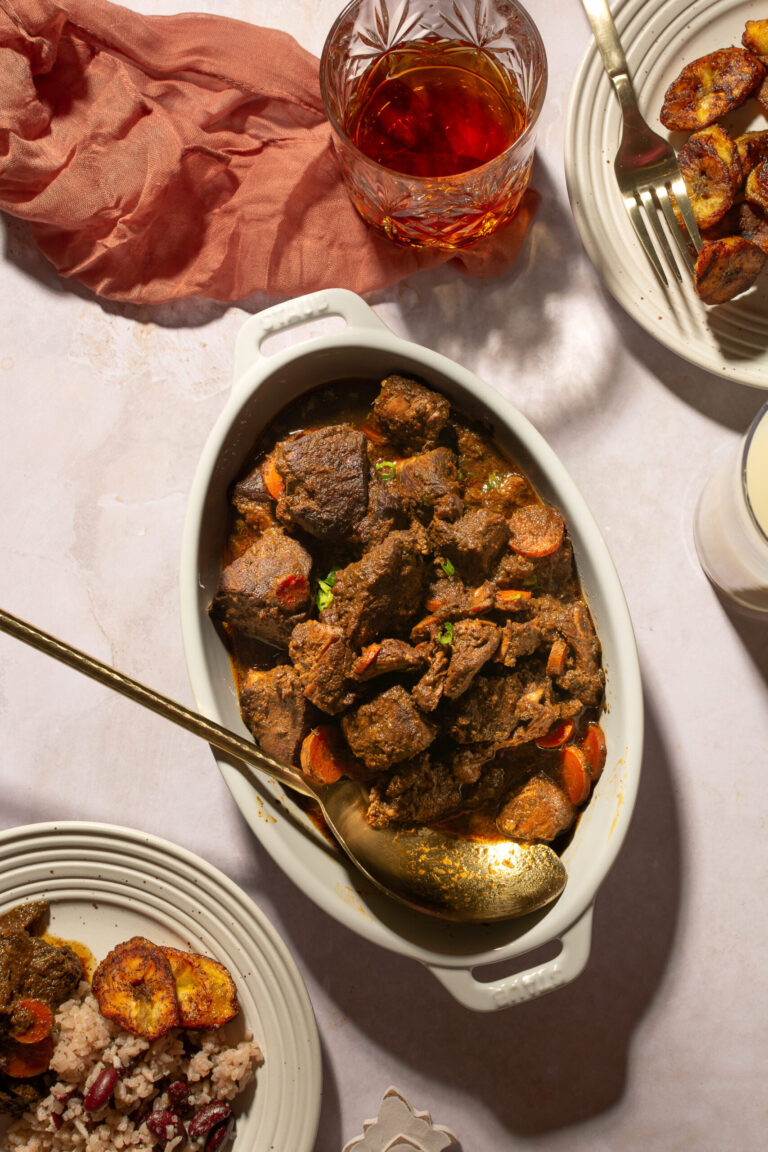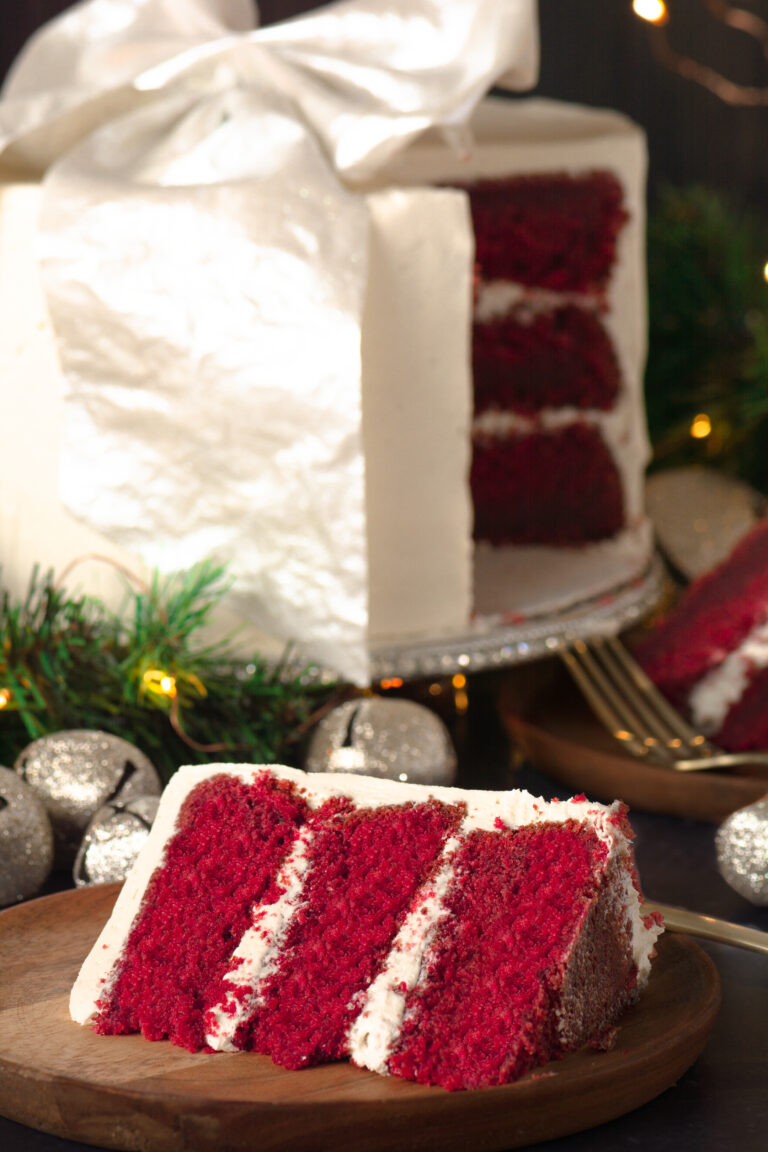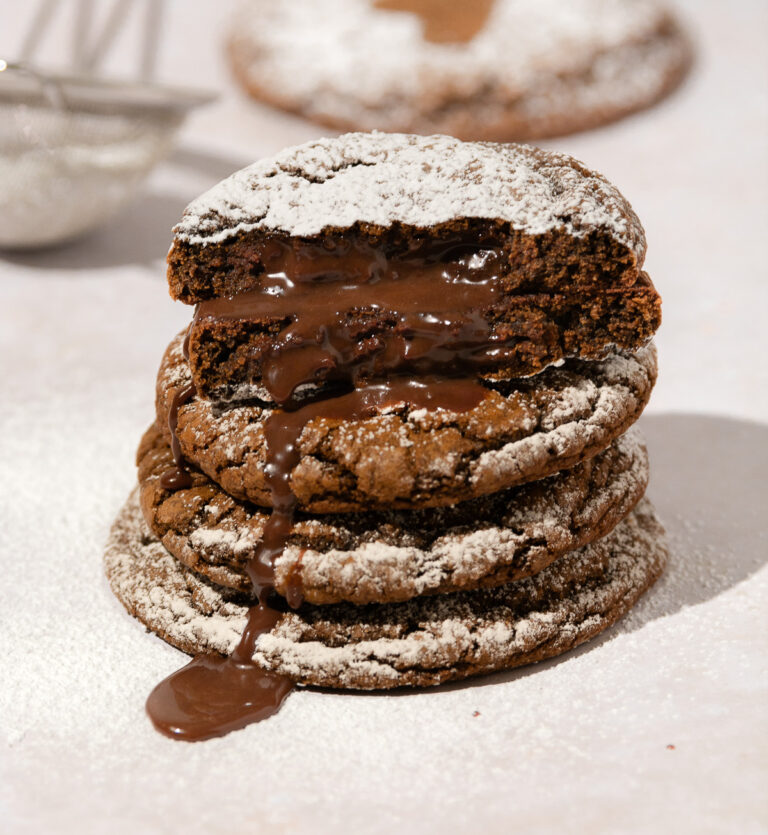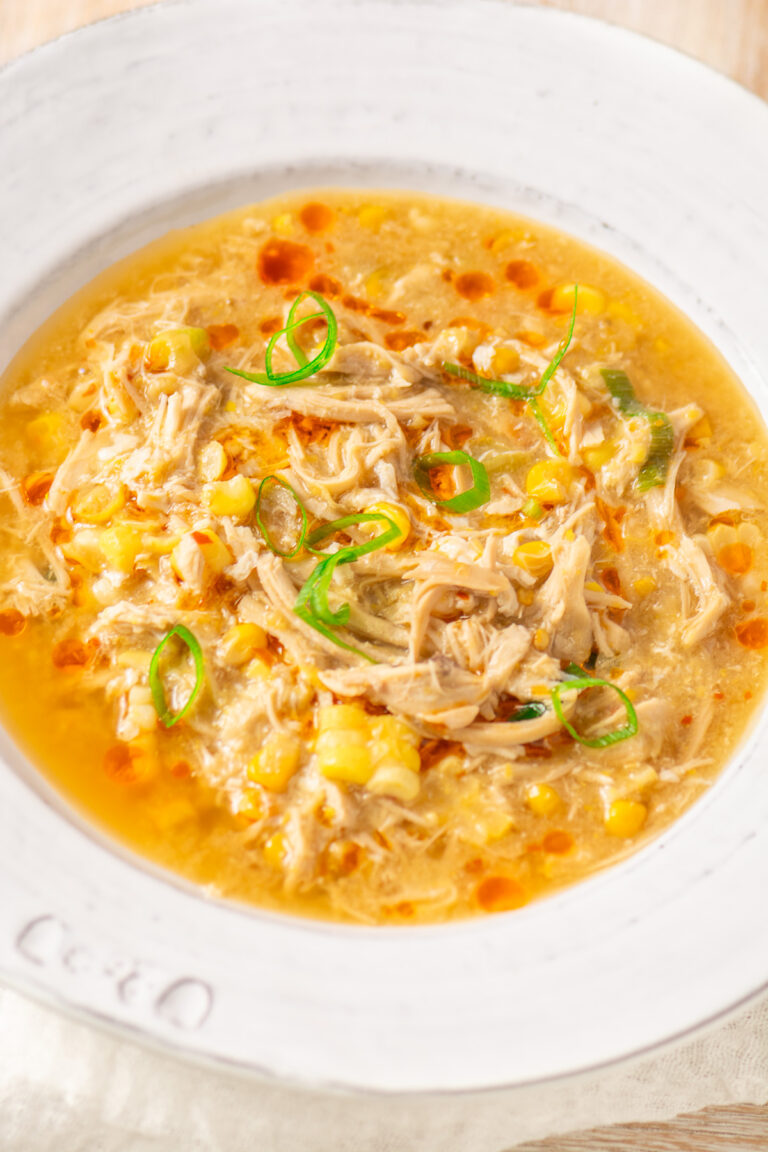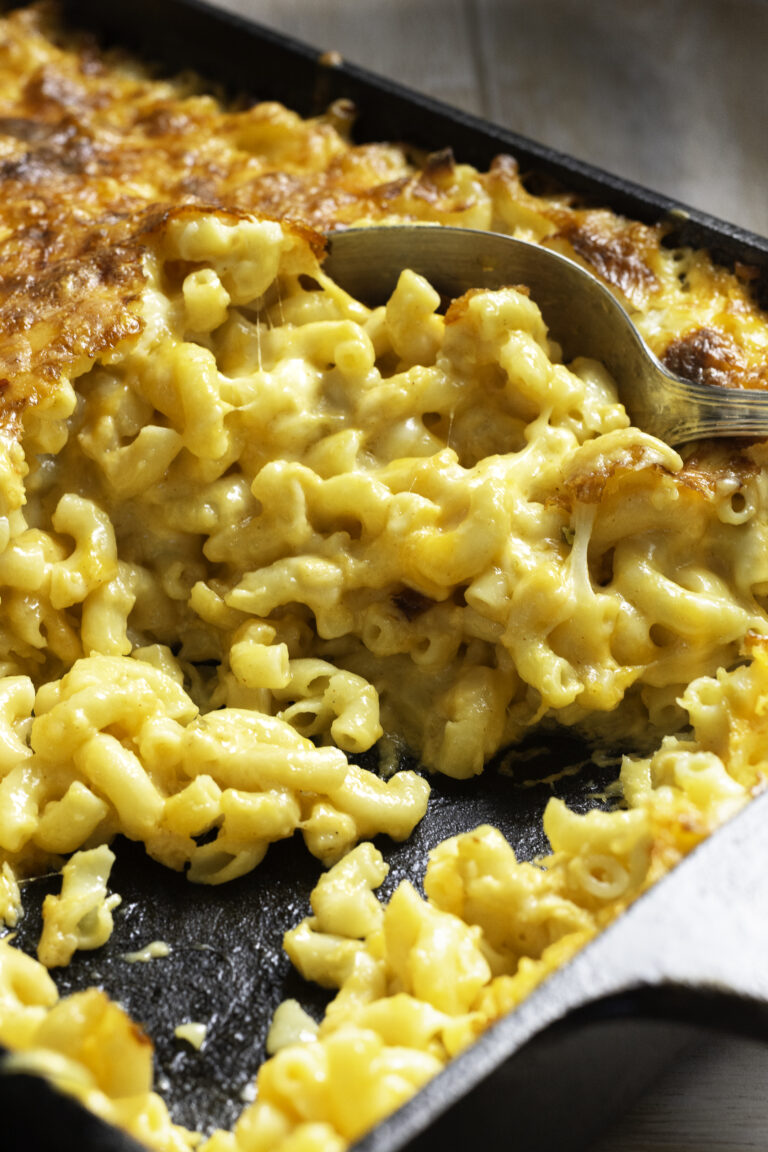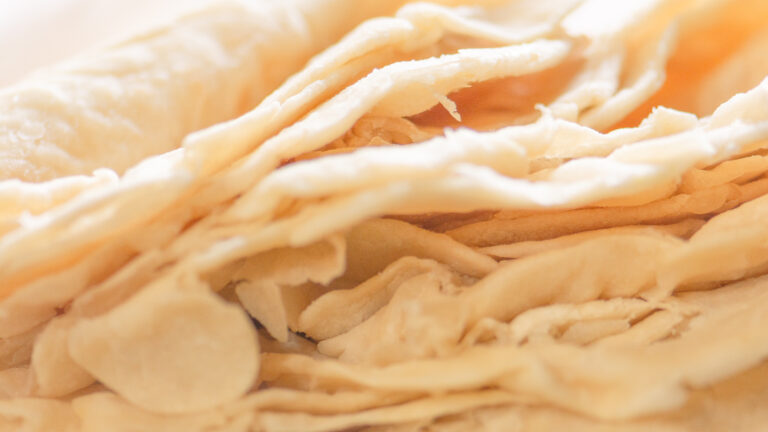Authentic Jamaican Jerk Chicken Recipe
This authentic Jamaican jerk chicken recipe is as real as it gets (and I would know)! I was born and raised in Jamaica and grew up surrounded by the smoky, spiced magic known to you as "Jamaican food" but simply as "home" to me. This isn’t some watered-down version—this is the real-deal jerk recipe, made with fresh thyme, Scotch bonnet peppers, allspice berries, and grilled low and slow over indirect heat on an outdoor grill to lock in all that bold, spicy flavor. I've been to my fair share of Boston Jerk Fests in Portland so it's safe to say I am a Jamaican jerk connoisseur!
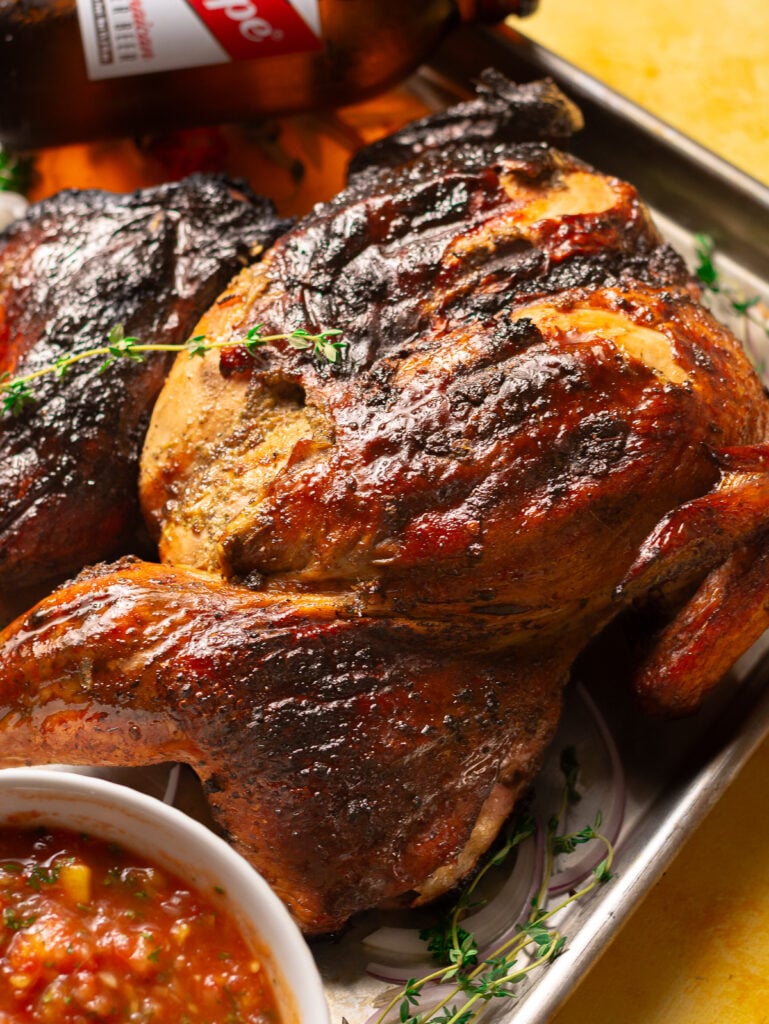
Save this recipe for later!
Unlike other (gentrified) recipes, this one skips soy sauce, cinnamon & nutmeg. Those don’t belong in an authentic jerk chicken recipe. Instead, you get a punchy wet rub packed with fresh ingredients and a deep, smoky flavor in every bite. Whether you’re using a charcoal grill or making adjustments for a gas one, I’ll walk you through the process step-by-step so your Jamaican jerk chicken turns out perfectly smoky and juicy with a caramelized, charry bark every time!
And of course, you know it’s not a true Jamaican feast without the right company on the plate. Serve this up with rice and peas, sweet plantains, macaroni & cheese or any of your favorite sides—and don’t forget a spoonful of my mango habanero salsa for that sweet-and-spicy finish.
What is Jamaican jerk?
Jerk is the original boss of “Jamaican recipes.” The method of “jerk” originated from Maroons – a community of previously enslaved persons who had escaped to the mountains of Jamaica. The meat of choice (originally wild boar most times) was seasoned thoroughly in whatever herbs could be sourced nearby. With fresh thyme, allspice berries & scotch bonnet peppers being most common. It was then wrapped and then buried underground so as not to give away the location of the previous African slaves while the meat cooked slowly over pimento (allspice) wood. The result? A deeply smoky and flavorful portion of meat that was tender and still juicy thanks to hours of slow roasting!
What are the ingredients in Jamaican Jerk?
Jamaican jerk seasoning is packed with fresh herbs and blended into a paste or jerk sauce for a marinade. You'll notice that this recipe does not include soy sauce, nutmeg or cinnamon. These ingredients are not included in authentic jerk but may be incorporated in other recipes, particularly "oven jerk", to compensate for the layer of flavor lost by not smoking the meat.
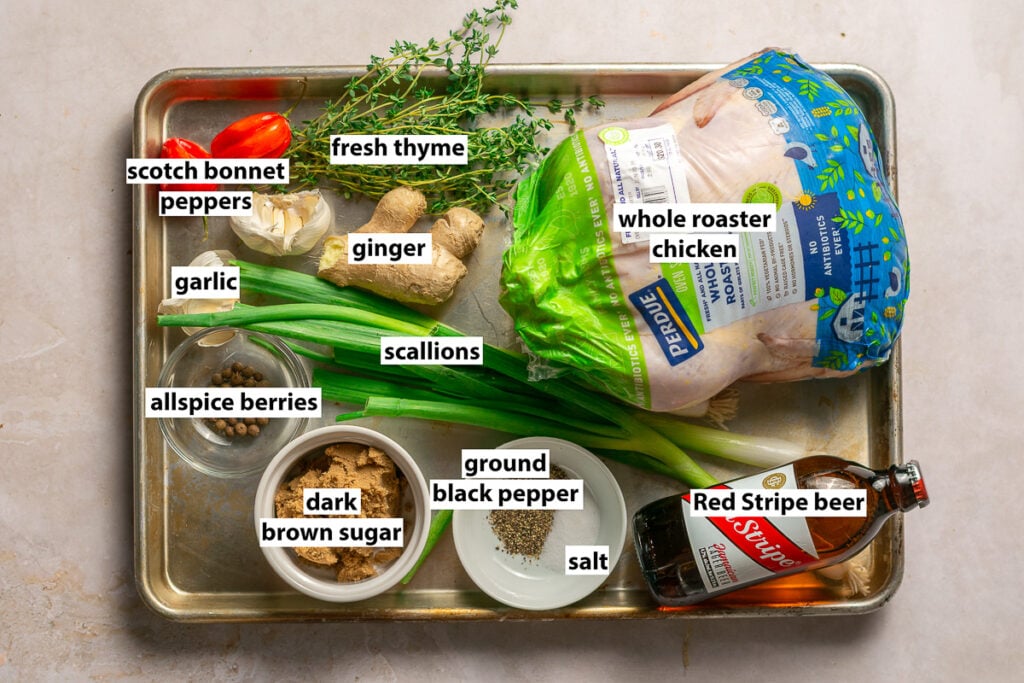
Whole chicken. A “roaster chicken” is ideal for chicken recipes like this one that have an extended cooking time. Its an older chicken compared to young chickens used for frying. The skin has a thicker layer of fat which helps to insulate the meat and prevents it from drying out during roasting. For a faster cooking time you can use chicken pieces (chicken legs, breast, thigh, wing etc.) but for best results make sure they are bone in & skin-on. Bone-in, skin-on chicken will be much more flavorful and more juicy than boneless or skinless cuts.
Allspice berries. A native spice that remains constant in all jerk recipes despite the evolution of the seasoning.
Scotch bonnet peppers. Needed for the hallmark fiery kick of Jamaican jerk chicken. Habanero peppers are at the same level on the Scoville scale and are a good substitute if you have difficulty finding scotch bonnets.
Fresh thyme. One of the herbs in Jamaica’s “holy trinity” of aromatics. If a savory Jamaican recipe doesn’t call for thyme it simply can’t be Jamaican!
Scallions. Has a sharp yet refreshing flavor to balance the richness in this rub. Another common ingredient in Jamaican cuisine.
Fresh garlic. A staple in Jamaican cooking like most other cultures
Fresh ginger. Plays both sides complementing the heat of the scotch bonnet peppers and the sweetness of the brown sugar.
Brown sugar. Needed to balance the heat of the scotch bonnet peppers. It also help create the signature crisp “bark”on jerked meats.
Red stripe beer. Jamaican-brewed beer is splashed on the chicken in the middle of cooking and helps to balance the heat from the scotch bonnet peppers. It also helps to keep the chicken juicy. If you can't find Red Stripe beer, substitute it with a cheap beer - these generally have a less robust and sweeter taste than more expensive beers. No need to worry about the alcohol content since the alcohol evaporates during cooking making this Jamaican jerk chicken still a perfect option for the entire family. If you're more comfortable with an alcohol-free option though you can use orange juice freshly squeezed from a large navel orange.
Tips to make Authentic Jamaican Jerk Chicken
Let the chicken marinate overnight. You should pay close attention to marinating times when cooking whole birds or any large pieces of meat. It allows more flavor to absorb into the meat while also to tenderizing it!
Use fresh herbs for the best flavor. To get the wet rub to workable consistency you will need to use fresh herbs. The brown sugar and salt draw out the natural moisture in the herbs when you blend them together. Fresh herbs also have a more potent flavor.
Use a meat thermometer. I recommend using a meat thermometer when cooking whole birds or meats, since areas like the thigh can take longer than expected to fully cook. I use this one. It helps to take out the guess work so you can confidently serve guests the perfect Jamaican jerk chicken that isn't under or overdone! You can also try a completely wireless meat thermometer like this one that also has a longer range but it comes with a premium price tag.
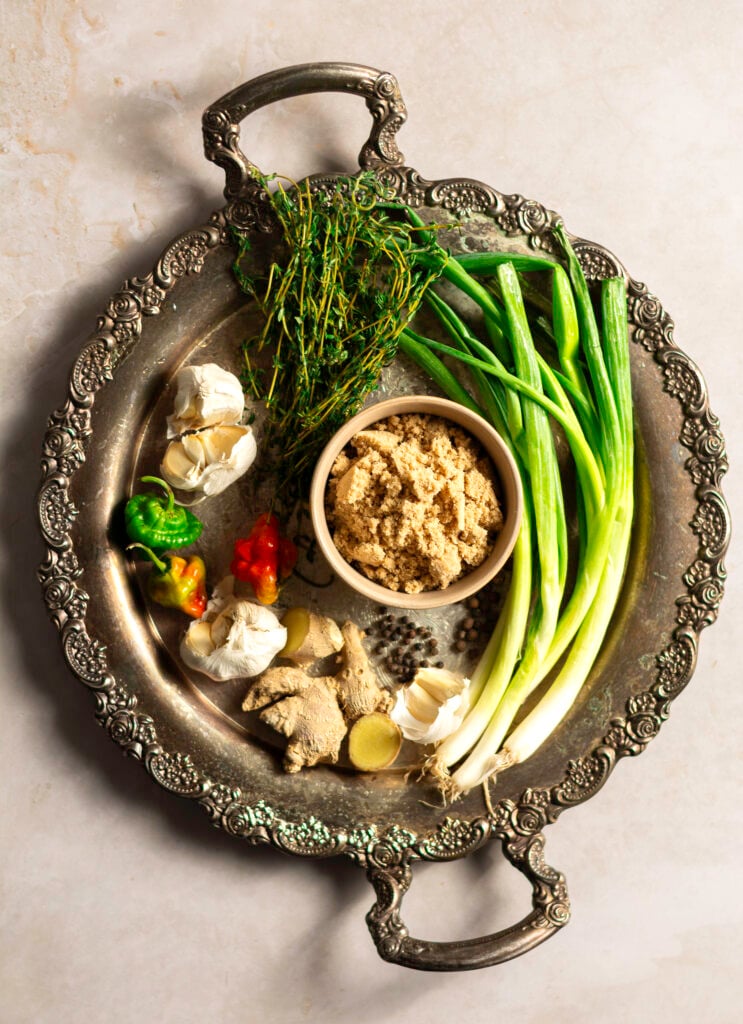
Grilling Tips for Jerk Chicken
Use wood chunks or logs for smoking. Opt for chunks or logs if not using a smoker box or tube. These won't burn out as quickly over an open fire. This is important for multiple reasons. First, it reduces the number of times the grill is opened causing the internal temperature to drop. Second, it reduces the amount of white smoke the chicken is exposed to. Thick white smoke leaves an acrid and overly bitter flavor in the jerked chicken
Skip the soak for the wood chunks. Soaking the wood means it will take longer to heat and only dry wood can create smoke to flavor the Jamaican jerk chicken.
Use a thermometer to monitor the ambient temperature of the grill. If using a charcoal grill the built in thermometer may not be accurate. This is especially true if, like me, it's a cheaper and/or older one. Place an oven thermometer in the grill close to the jerk chicken. Optimal ambient temperature is 225-275°F. This temperature cooks the chicken slowly so that it has enough time to absorb the smoky flavor.
Cook the chicken completely in one go. Make sure you cook the chicken completely before removing it from the grill or refrigerating. Outdoor cooking can be a little unpredictable and you may have to remove the chicken from the grill due to sudden weather or other circumstances. In this case, the jerk chicken should be finished indoors in a baking dish in the oven. This continuous cooking is to minimize the time the chicken is in the danger zone. The danger zone for chicken is from 40-140°F. This is the temperature where bacteria grow and multiply rapidly.
Frequently Asked Questions
Can I use a gas grill for Jamaican jerk chicken? You can still smoke meat on a gas grill, even though it's not specifically designed for it. In addition, gas grills it's easier to maintain the appropriate temperature for smoking with a gas grill.
To smoke on a gas grill, set up two zones - a "hot" zone and "cool" zone. To do this, fire at least one burner on the grill, making sure you leave space for the chicken so that it doesn't sit directly over the heat.
For smoke, a smoker tube or box filled with wood pellets or chips is the best option for gas grills. The box or tube controls the burn rate and decreases the amount of white smoke released. This is especially optimal since most gas grills don't have the same venting options as charcoal grills or smokers.
Why is the jerk rub wet? I shared my jerk seasoning on reddit and got in a debate with another user who, I can only assume did not grow up in Jamaica since they were taken aback by it being a wet rub. The jerk seasoning used in this recipe utilizes fresh herbs and ingredients just as the Maroons did. Blending the herbs and vegetables with the sugar and salt naturally leeches out their moisture. This creates a wet rub. An all-purpose dry rub of your choice can be used in addition but it should not replace the wet jerk rub.
Can I make authentic jerk in the oven? Nope. The jerk seasoning is really only 40% of the formula for authentic jerk. To make true jerk, you need to expose the meat to wood smoke while it cooks. Traditionally, cooks smoked the meat underground with green pimento wood. However, for sustainability reasons, they now widely replace pimento wood with “sweet wood” to infuse the distinctive smoky flavor of jerk.
I love to use apple wood. It renders a sweet smoky flavor that permeates throughout the meat. Also, it easily creates “blue smoke” which is preferred over thick white smoke that gives an acrid flavor.
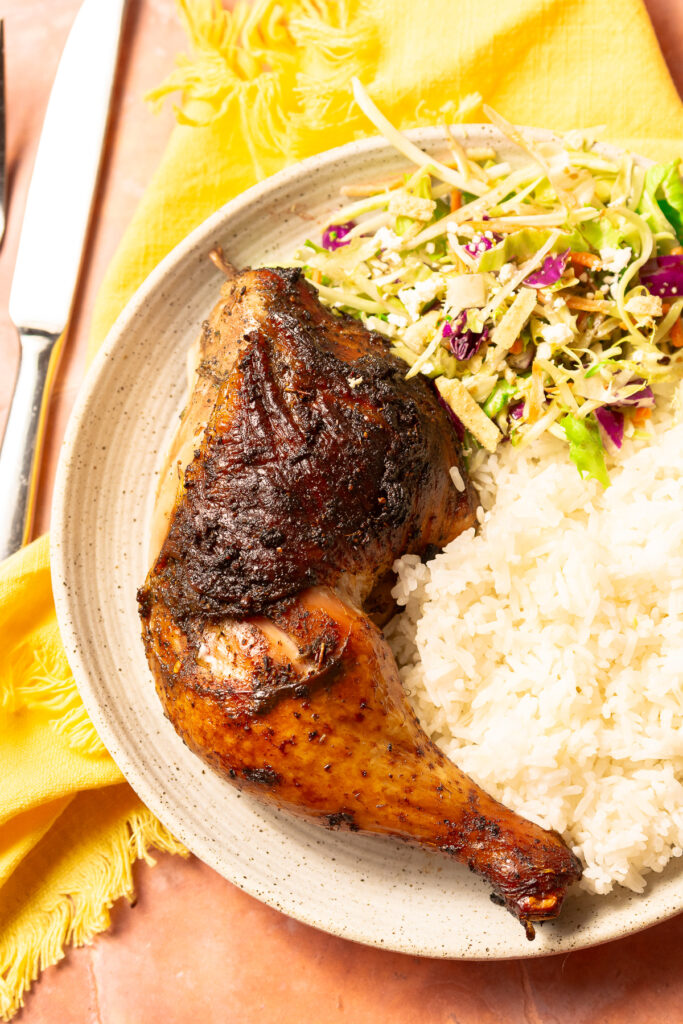
What is blue smoke?
"Blue" is a thin smoke that is only barely perceptible. It indicates a clean-burning fire while the thick white smoke indicates the presence of creosote (a chemical that causes a bitter taste). Incomplete combustion usually causes white smoke, which you can fix by doing one or more of the following:
1. Increase airflow to the fire
2. Avoid placing too much wood directly on to the charcoal that would smother the charcoal and cause a fierce, fast burning fire. 2-4 chunks should be more than enough to start with. Replace wood chunks only when the previous have burned out completely.
3. Make sure the charcoal is ashed over before you pile it into the grill or smoker.
How to Make the Wet Jerk Rub
Step 1. Add all the ingredients for the rub (brown sugar, scotch bonnet peppers, scallions, thyme, ginger, garlic, ground allspice, black pepper & salt) to blender or food processor. Blend continuously on high speed until it forms a spreadable paste.
Stop the blender halfway to push any herbs high up against the sides down towards the blade. As you blend everything, the herbs release natural moisture, making the rub smooth and spreadable.
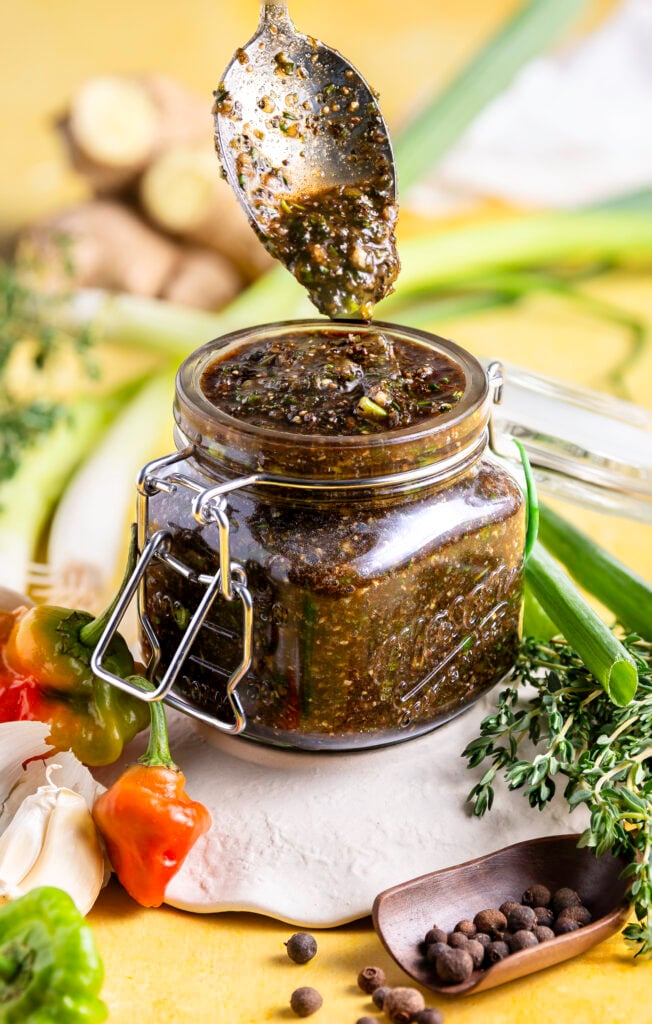
How to Spatchcock a Chicken (if using a Whole Chicken)
Why do I need to spatchcock the chicken? A whole chicken will cook more evenly and with more even caramelization and crisping of the skin since a greater surface area is exposed to the heat. It will also cook faster and the smoky flavor will better permeate throughout the chicken . A whole trussed chicken will cook more unevenly because the thighs, drumsticks, and wings are smushed together.
Step 1. With the chicken breast side down, feel on either side of the tail for a soft spot with a little give. Using a sturdy pair of kitchen shears, cut along that soft spot located next to the tail and following it all the way up along the spine. Repeat on the other side. You can either discard the spine or save it for later for soups or to make chicken broth or chicken stock.
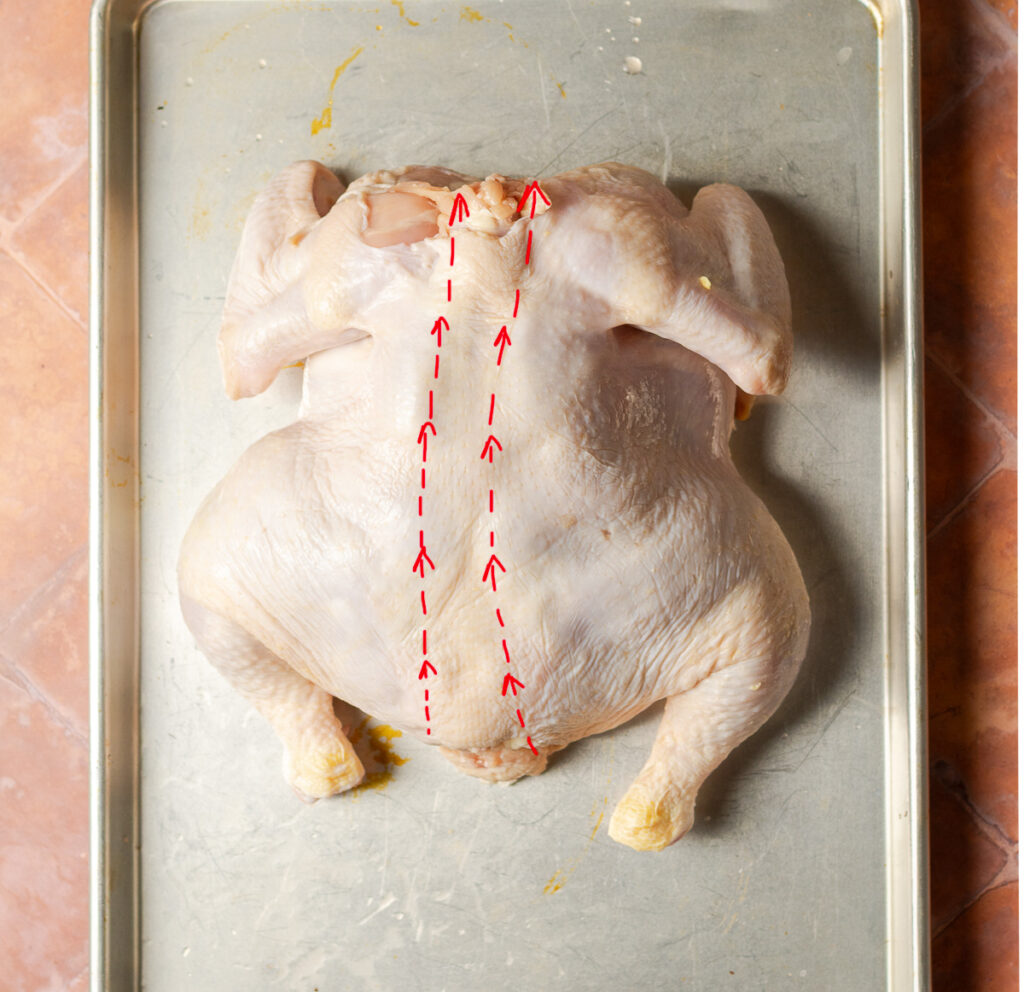
Step 2. Pat the entire chicken dry on with clean paper towels. This will help in the next step and also helps more of the wet rub adhere to the chicken. Remove the innards.
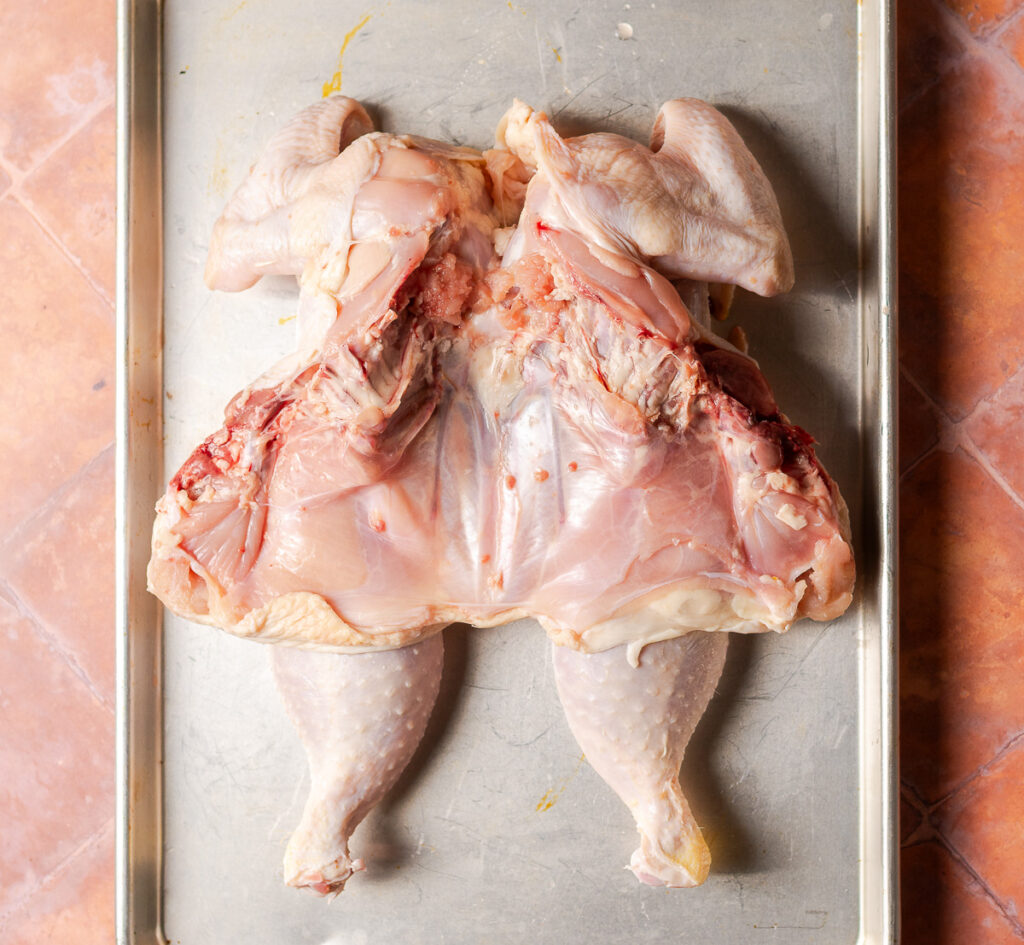
Step 3. Flip the chicken over breast side up and press down on the center of breast bone with the heel of your palm.
I like to use a CPR stance for this. Start by placing your dominant hand directly over the other. Place your other hand directly on top of the dominant one and interlock your fingers. This will help prevent your hand from sliding too much. Push down on the breast bone with the heel of your palm while using your upper body weight to help with force.
You should hear or feel a crack a slight. This will help the chicken lay completely flat while being roasted.
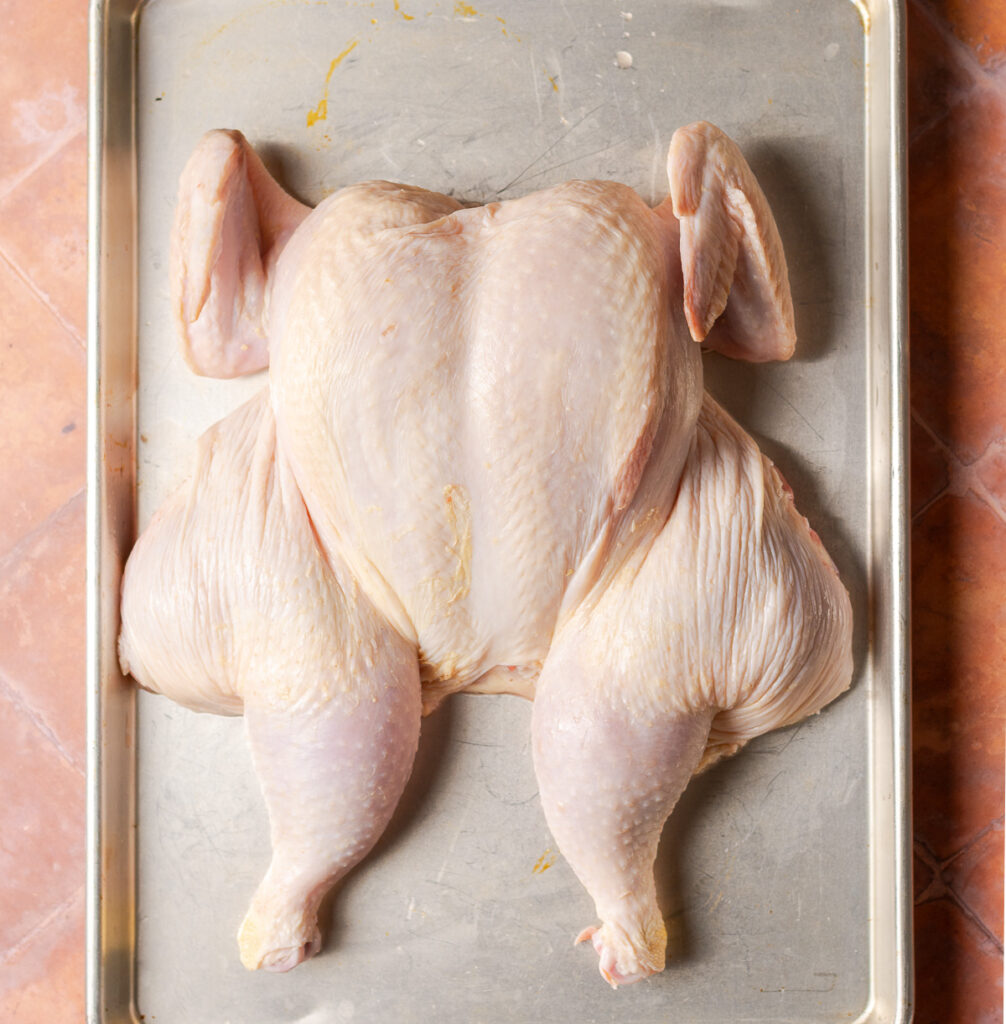
Get the Chicken Ready for the Grill
Step 1. Apply the wet rub prepared earlier to the chicken. Pull the skin away from the meat (without removing it completely) and apply the rub under the skin in addition to the outer portion. Do this on both sides. If you find it difficult to get the seasoning all the way under the skin you can either massage the outside of the skin to direct the seasoning to any untouched portions or use as spoon to push the seasoning and spread it evenly.
For best flavor, marinate the seasoned chicken for at least 4 hours or preferably overnight . As the chicken marinates the seasoning permeates throughout the meat and also helps to tenderize it as well.

Step 2. Insert a meat thermometer into the thigh of the chicken. When placing your temperature probe be careful of two things. First, avoid touching it to bone. Bone conducts heat differently so you run the risk of getting inaccurate readings. Second, once the probe is placed double check that most of it fully surrounded by the meat of the chicken thighs for an accurate reading.
Using a corded or wireless thermometer over an instant-read thermometer will help reduce the amount times you open the grill to check on doneness. This will also help the grill retain more heat and maintain the temperature needed for even cooking.
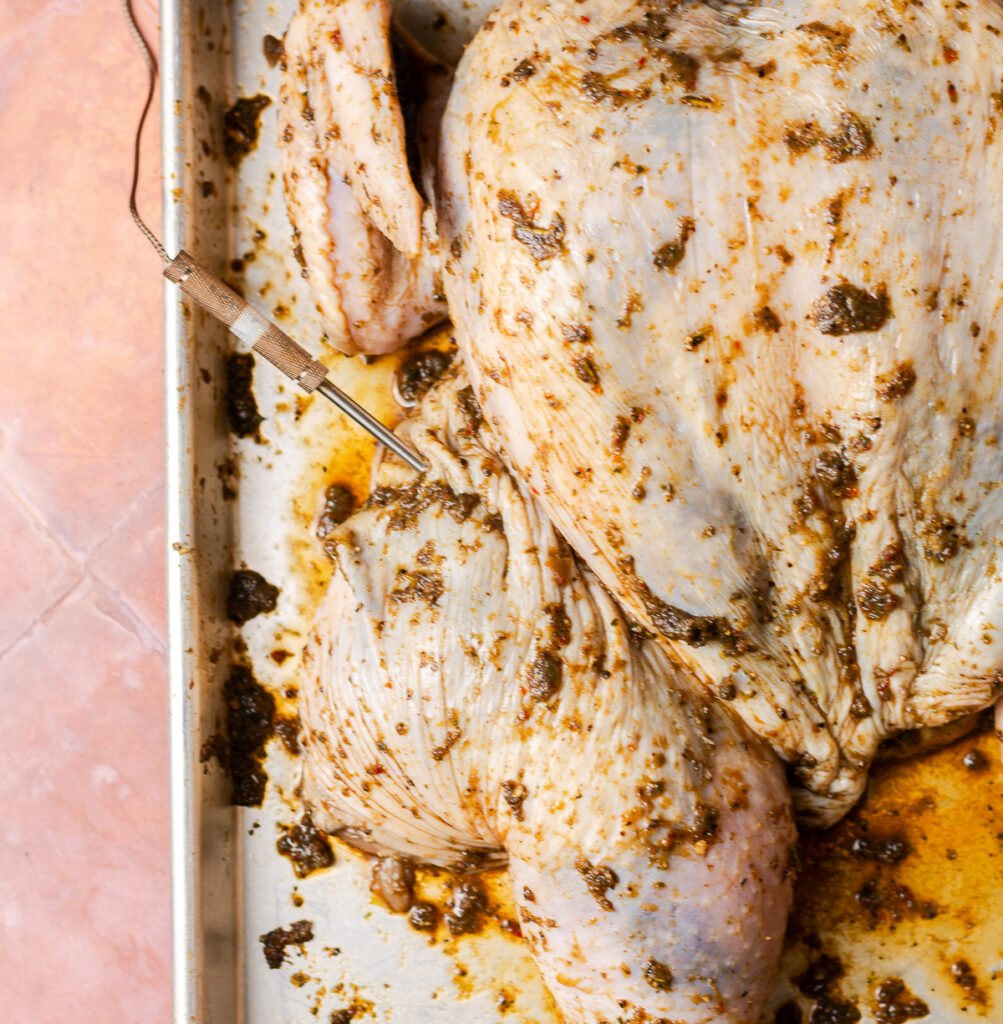
How to Prepare Your Grill & Jerk the Chicken
Step 1. Using a charcoal chimney, ignite your coal briquettes. 25-30 briquettes (or about a third of the charcoal chimney) should bring the grill up to the 250°F needed to smoke the chicken.
When the charcoal mostly ashes over (about 15-20 minutes) and stops producing thick white smoke, you can place it on the grill or smoker.
Step 2. Once the briquettes are ready, split them in two piles in the ends of the grill barrel. Leave enough space in the center to avoid exposing the chicken to direct heat. To make it easier to add additional briquettes as needed to maintain the optimal temperature of 250°F, remove any excess grates leaving only one in the center where the chicken will sit.
Step 3. After piling your briquettes, add a couple wood chunks (or pellets or chips in a smoker box). Close the grill and allow the wood to preheat. Once thick white smoke is no longer coming from the grill it is ready.
If using a barrel grill, place the wood on the side opposite from the chimney so that the airflow directs the smoke across the chicken.
If using wood chunks, place these alongside the briquettes but not directly on top. This will prevent them from igniting and burning out really quickly. This also reduces the amount of thick white smoke (bad smoke) that is produced.
If using a smoker box you can place it on top of the briquettes.
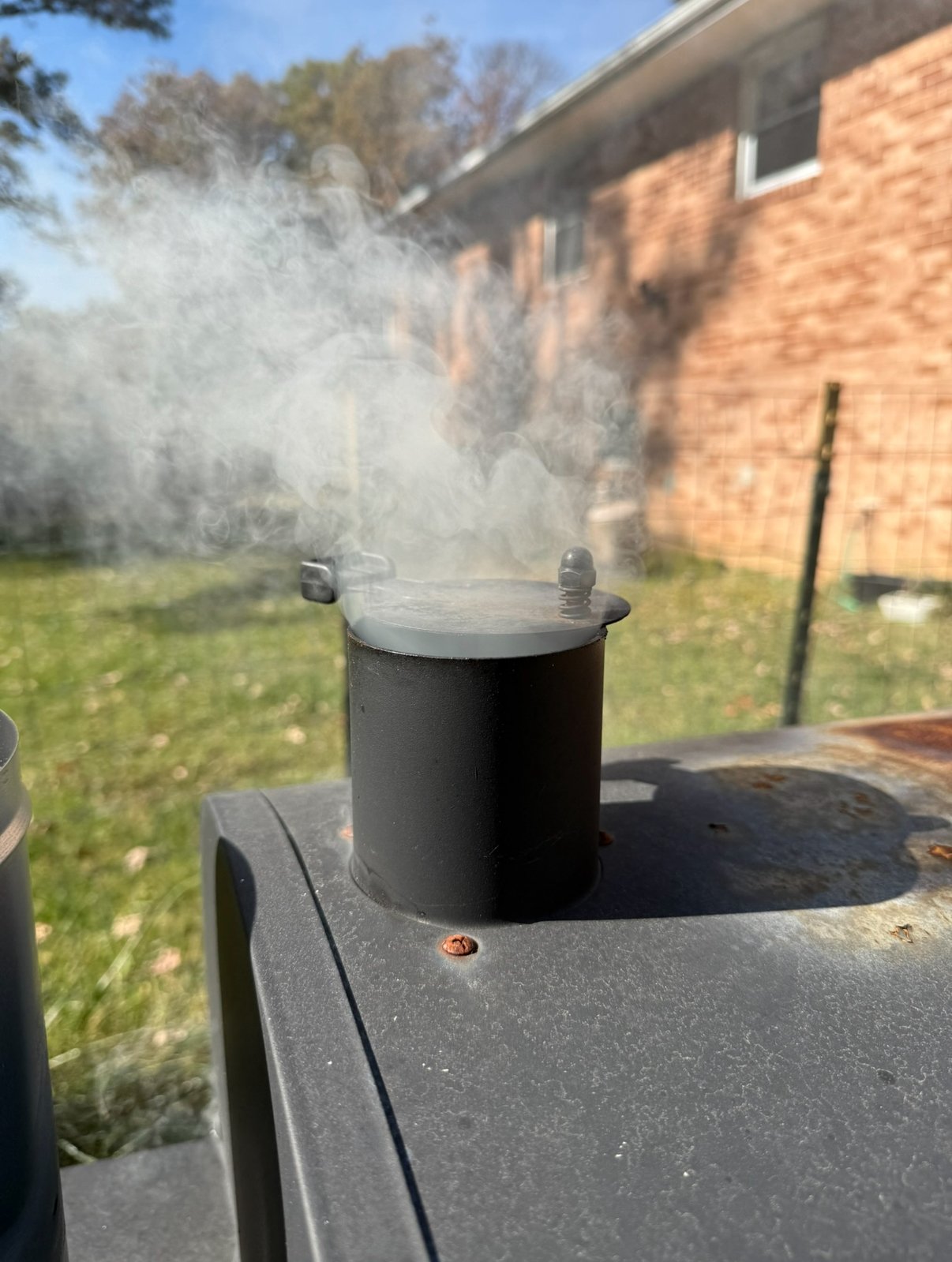
Step 4. Once the grill is ready place the chicken directly on the grate in the center. There shouldn't be any flames or charcoal directly under the chicken. This is so the chicken cooks slowly to absorb as much of the smoky flavor which is crucial for authentic Jamaican jerk chicken!
If your meat thermometer does not also monitor the ambient grill temperature, I like to hang a corded thermometer from the chimney to ensure an optimal temperature range while cooking.
Step 5. Close the grill and allow the chicken to smoke & cook for 1.5-2 hours or until the internal temperature of the chicken thigh reads 150°F. Open the grill as needed to add coal briquettes to maintain a temperature range of 225-275°F.
Step 6. Once the meat thermometer reads 150°F splash the chicken with the Red Stripe Beer (if using) on both sides. Be careful when flipping the chicken. Since the chicken is nearly done, it will easily come away at the joints when you flip it.
Step 7. Slide the grate over so that the chicken is now directly over the heat and allow the chicken to continue to cook here until it reaches the target internal temperature of 165°F. This will help get a super crispy, bark-like skin for quintessential jerked chicken.
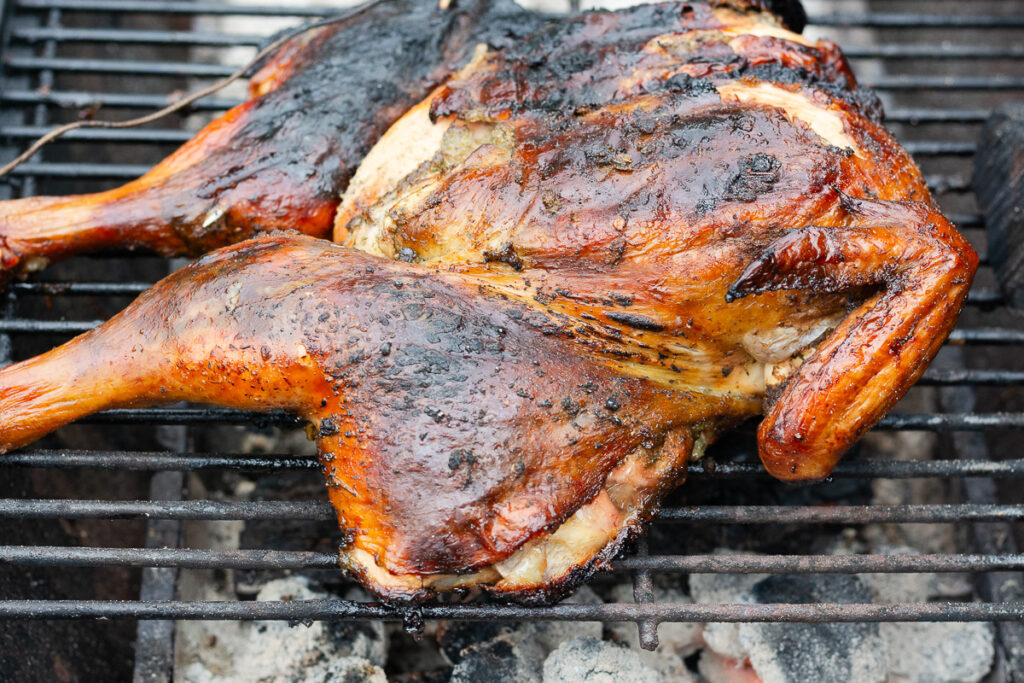
Once done allow the chicken to rest for at least 15 minutes before serving to allow the moisture to redistribute throughout the meat. Cutting into the chicken fresh off the grill will cause all of the juices to run out, drying out the chicken.

Serve the chicken with this sweet & spicy mango habanero sauce and Jamaican rice peas! Store leftovers in an airtight container and consume within 4 days.
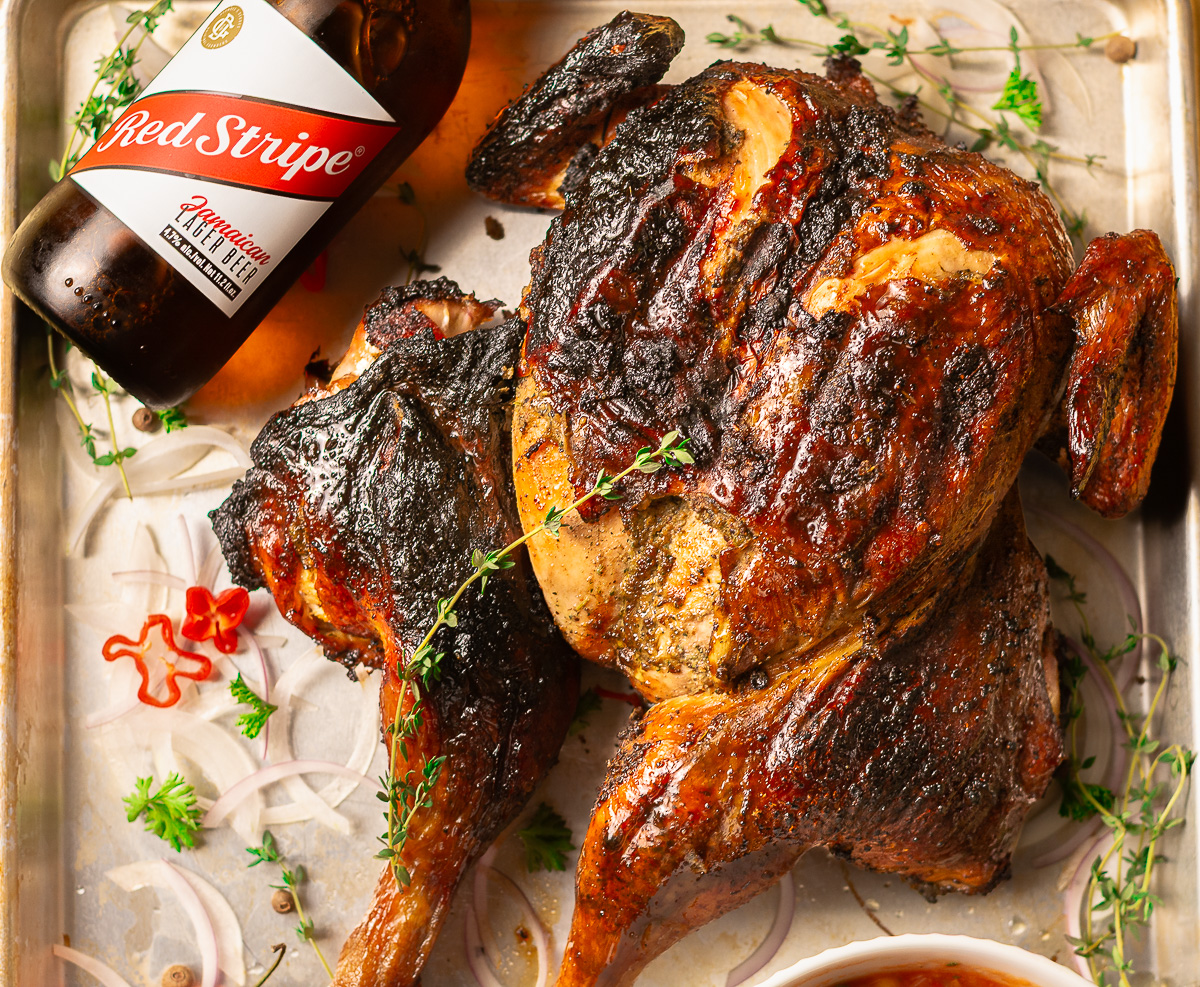
Authentic Jamaican Jerk Chicken Recipe
Ingredients
Equipment
Method
- Add all the ingredients for the rub (brown sugar, scotch bonnet peppers, scallions, thyme, ginger, garlic, ground allspice, black pepper & salt) to blender or food processor. Blend continuously on high speed until it forms a spreadable paste.
- With the chicken breast side down, feel on either side of the tail for a soft spot with a little give. Using a sturdy pair of kitchen shears, cut along that soft spot located next to the tail and follow it all the way up along the spine. Repeat on the other side.
- Discard the spine (or save as desired for chicken stock) & remove the innards.
- Pat the entire chicken dry on both sides with clean paper towels.
- Flip the chicken over so the breast side faces up. Press down on the center of breast bone with the heel of your palm. You should hear or feel a slight crack.
- Apply the wet rub prepared earlier to the chicken. Pull the skin away from the meat (without removing it completely) and apply the rub under the skin in addition to the outer portion. Do this on both sides.
- Marinate the seasoned chicken for at least 4 hours or preferably overnight for best flavor.
- Once the grill is ready, insert a meat thermometer into the thigh of the chicken. Avoid touching it to bone and ensure that most of it fully surrounded by the meat of the chicken thighs for an accurate reading.
- Ignite your coal briquettes. 25-30 briquettes (or about a third of the charcoal chimney) should bring the grill up to the 250°F needed to smoke the chicken. The briquettes are ready once the charcoal mostly ashes over and stops producing thick white smoke.
- Once the briquettes are ready, split them in two piles in the ends of the grill barrel. Leave enough space in the center to avoid exposing the chicken to direct heat.
- After piling your briquettes, add a couple wood chunks alongside the charcoal briquettes. Close the grill and allow the wood to preheat. Once the thick white smoke is no longer coming from the grill it is ready.
- Once the grill is ready place the chicken directly on a grate in the center. There shouldn't be any flames or lit charcoal directly under the chicken.
- Close the grill and allow the chicken to smoke & cook for 1.5-2 hours or until the internal temperature of the chicken thigh reads 150°F. Open the grill as needed to add coal briquettes to maintain a temperature range of 225-275°F.
- Once the meat thermometer reads 150°F, splash the chicken with the Red Stripe Beer (if using) on both sides. Use just enough to baste the chicken.Be careful when flipping the chicken as it will easily come away at the joints since it is almost cooked.
- Slide the grate over so that the chicken is now directly over the coal briquettes and allow the chicken to continue to cook here until it reaches the target internal temperature of 165°F. Again, the flames should not be touching the chicken.
- Once done allow the chicken to rest for at least 15 minutes before serving to allow the moisture to redistribute throughout the meat.
- Serve hot. Store leftovers in an airtight container and consume within 4 days.
Notes
- If splitting this prep between 2 days be sure to get as far as marinating so that the chicken has time to absorb the flavor of the marinade
- Use gloves when applying the rub to chicken. Scotch bonnet peppers are spicy so using your bare hands can be irritating to your skin. In addition, even after washing your hands, capsaicin (what gives peppers their spicy flavor and burning sensation) can linger so touching your hand to your face/eyes can get dicey!
- Wait until the thick, white smoke clears from the grill chimney. This smoke can give an acrid flavor to the chicken. The "good" smoke is "thin, blue smoke," and is only barely perceptible and almost resembles light steam. See this video reference in the blogpost of clean burning "thin, blue smoke."
